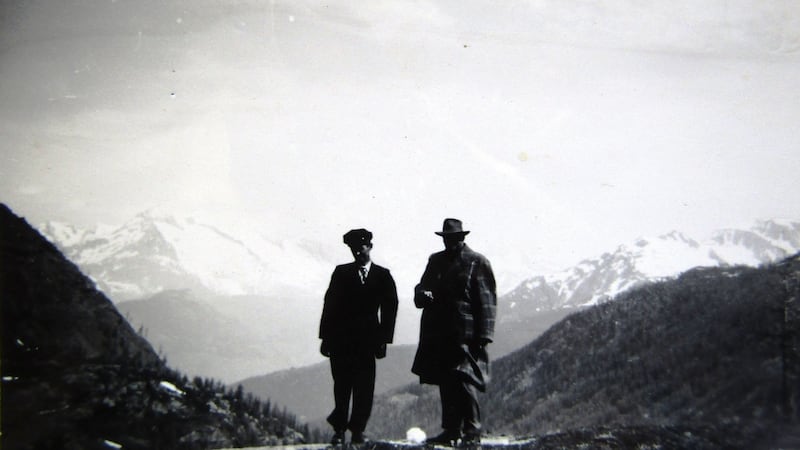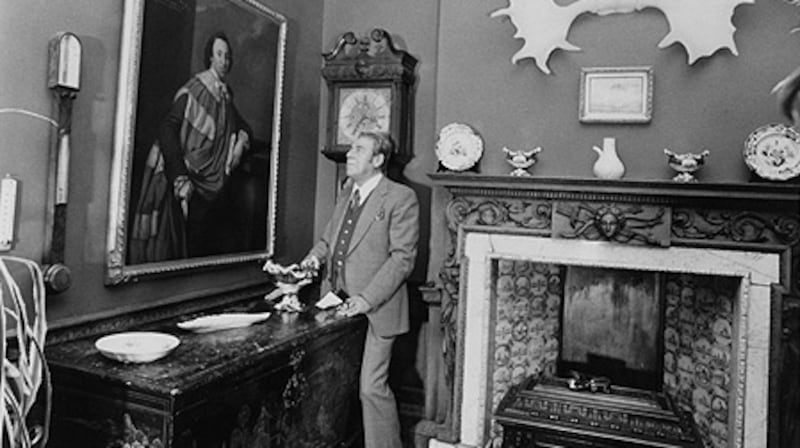Ever heard of the Offaly man who spoke 27 languages, fought in the first World War, shot a man-eating tiger in India, explored the Himalayas, went crocodile-hunting in Burma, kept a pet bear named Agu and ended his days living in Mullingar with a former Shakespearean actor, known, informally as 'Sexy Rexy'? Charles Howard-Bury was one of those larger-than-life characters of the Anglo-Irish gentry – in the twilight years – and now largely forgotten. But his life reads like a series of ripping yarns from Boy's Own.
Howard-Bury was born in 1883, the heir to Charleville Castle in Tullamore. He was educated at Eton and Sandhurst and then joined the British army. He went to India – then at the Edwardian zenith of the British Raj – with his regiment, the King's Royal Rifle Corps and the posting sparked a lifelong interest in travel, exploration, natural history and botany.
While travelling in Asia, he shot a man-eating tiger in India that had, reputedly, devoured 21 fakirs (holy men); visited Tibet and the Tian Shan Mountains of Heaven; hunted crocodiles in Burma; and acquired a pet bear named Agu that he brought home to Ireland and wrestled with in the garden for sport. The bear, incidentally, took to the Irish midlands with relish and lived for 20 years.
Back from India he was, inevitably, dispatched to the Western Front when the first World War began in 1914 and he served with distinction – at Ypres, the Somme and Passchendaele – and was one of the lucky ones who survived unscathed. He returned to Ireland where he had also inherited – and moved to – Belvedere House in Mullingar, Co Westmeath. But he was soon restless again and, in 1921, was appointed to lead the first British expedition to investigate the possibility of conquering Mount Everest. The "Mount Everest Reconnaissance Expedition" – for which he hired 50 "coolies" and 100 mules. The expedition attracted significant public interest not least because a wolf's footprints spotted in the snow were misinterpreted by the media as evidence of the "Abominable Snowman". Media reports – including a story with the headline "Wild Hairy Man – Strange Footprints on Everest" – suggested that proof of the "Abominable Snowman" had been uncovered to the delight of newspaper readers worldwide. Howard-Bury believed, rather, that the tracks in the snow had been made by a wolf.
Politics and expeditions
His subsequent book, Mount Everest, the Reconnaissance, 1921 was published in London, became a bestseller and made Lt-Col Howard-Bury a household name. Back in Ireland he was, prior to Independence, a deputy-lieutenant (a representative of the British monarchy) and justice of the peace for Co Westmeath.
After the establishment of the Irish Free State, he switched his attention to British politics and was elected a Conservative MP (for the Bilston constituency in the English West Midlands) in 1922. But he lost his seat in the 1924 general election. He then tried – and failed – to get elected to the Irish Senate in 1925. The following year, he returned to the House of Commons as an MP by winning a by-election in the Chelmsford constituency in Essex. He left British politics in 1931 and returned to Ireland where he wore Savile Row suits and Charvet shirts when Charlie Haughey was still in short trousers. He never married.

In the late 1940s, Rex Beaumont, an Englishman in his 30s, moved to Belvedere House and lived with Howard-Bury who was then aged in his 60s. A bit of a mystery man, informally known as "Sexy Rexy", the former Shakespearean actor had served with the Royal Air Force during the second World War and flown on bombing raids over Nazi Germany. The pair entertained lavishly – guests reputedly included Princess Grace of Monaco, the Crown Prince of Sweden, Charlie Chaplin and Elizabeth Arden – and also acquired a villa in Hammamet, Tunisia.
Howard-Bury died, aged 80, in 1963 and Beaumont inherited the house and continued to live there in style. Although of what used to be described as “humble origins”, he was sometimes mistakenly assumed to be titled as his entry in the Irish telephone directory read “Beaumont Rex Bart Belvedere Mullingar”. But ‘Bart’ in this case was simply his second name and not the commonly used abbreviation for ‘Baronet’.
In a very rare interview, Beaumont said that Howard-Bury had “had a great disappointment in his life; he only loved once and this (unnamed) woman deserted him; she became a duchess and it affected him terribly”.
Rex Beaumont eventually sold Belvedere House to Westmeath Co Council in 1982 and died in Mullingar Hospital in 1988. There was no funeral and his body was donated to medical research.
Photographs discovered
Last year, Co Meath auctioneer Damien Matthews discovered a cache of photographs taken by Howard-Bury "languishing in the drawer of a sideboard in a suburban house, their importance unrecognised." They will go under the hammer in his auction tomorrow (Sunday, February 11th) in the saleroom at Oldcastle, Co Meath.
The photographs, to be sold in 21 separate lots, include images taken by Howard-Bury of the Mount Everest expedition and some earlier and later images of Tibet, Peking and Mandalay (Burma). They’re not of great monetary value (estimates range between €40 and €250) but they offer an utterly fascinating glimpse into a lost world.

The most wonderful image is surely Lot 1009, a portrait of his guide “Tola Ba” with Howard-Bury’s s pet bear, Agu in the Tian Shan Mountains in 1913 (estimate €50-€80). A year later both Howard-Bury and the bear were back in Ireland. Mr Matthews said the photographs had been left to Rex Beaumont, who, in turn, had gifted them to a friend who has now decided to sell them.
But what happened the other stuff collected (and inherited) by Howard-Bury? In 1980, Rex Beaumont, announcing that he planned to spend more time at the villa in Tunisia, sold the contents of Belvedere House (including items that Howard-Bury had moved there from Charleville Castle) at a major auction jointly hosted by Hamilton & Hamilton and Christie’s. Dealers from Dublin, Paris, London and New York attended and the legacy of yet another Irish Big House was scattered as the art, furniture and collectibles accumulated over centuries were dispersed. Among the items sold were two taxidermy stuffed bear heads – one, presumably, Agu’s – and, among living creatures, five sets of peacocks that made IR£50 a pair. We shall not see their like again.











